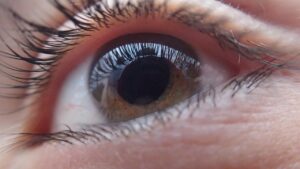What is Glaucoma
When it comes to safeguarding our vision, being aware of conditions like glaucoma is essential. This eye disease, affecting around 300,000 Australians, leads to vision loss by harming the optic nerve.
The risk of developing glaucoma increases as we grow older, with one in eight Australians over the age of 80 facing this condition. Across all age groups, two out of every hundred Australians will develop glaucoma in their lifetime.
Glaucoma has a strong hereditary factor, with those who have a first-degree relative suffering from glaucoma having a tenfold increased risk of encountering this eye condition themselves.
Types of Glaucoma
Glaucoma is classified into several types, each with unique characteristics and treatment approaches. 
Primary open-angle glaucoma is the most common form of glaucoma, characterised by gradual vision loss due to slow drainage of eye fluid (aqueous humour), often without early symptoms.
Angle-closure glaucoma is less common but more urgent, occurring when the drainage angle between the iris and cornea suddenly becomes blocked, causing rapid vision loss and potentially severe symptoms.
Normal-tension glaucoma involves optic nerve damage despite normal eye pressure.
Secondary glaucoma results from other conditions or injuries affecting eye pressure.
Understanding these differences is crucial for targeted and effective treatment, highlighting the importance of regular eye exams for early detection.
Glaucoma Risk Factors
Risk factors for glaucoma extend beyond age and family history, encompassing a variety of health and physical conditions. High intraocular pressure is a primary risk, alongside a thinner cornea and abnormalities in optic nerve appearance.
Other factors include high or low blood pressure, diabetes, and prolonged corticosteroid use. Understanding these risks can prompt early screenings and preventative measures, potentially staving off the progressive vision loss associated with glaucoma.
Signs of Glaucoma
In most cases, early signs of glaucoma are rare. Usually, vision loss is the first of any glaucoma signs. Symptoms are best detected through eye tests, which is why regular eye examinations by an optometrist are crucial.
Left untreated, the optic nerve becomes damaged and vision gradually deteriorates. Early vision loss is often tricky for an individual with glaucoma to detect, as the other eye is able to compensate for the loss in sight. This loss in sight is often in the peripheral vision initially.
When a significant amount of nerve fibres become damaged in the optic nerve, the sight loss becomes more central. Vision cannot be restored once lost, making early detection and treatment for glaucoma essential.
How is Glaucoma Detected?
Regular testing and early detection of glaucoma are vital because they can halt or significantly slow down the progression of vision loss. Since glaucoma often lacks early symptoms, routine eye exams are crucial for identifying the condition in its nascent stages, enabling timely intervention and preserving eyesight. In Australia, optometrists routinely assess patients for signs of glaucoma during a comprehensive eye examination.
Testing involves assessing the appearance of the optic nerve with ophthalmoscopy or retinal photography and measuring the intraocular pressure of the eye with a tonometer. In some instances, visual fields or an optical coherence tomography (OCT) scan may be performed to give further clinical information to enable the practitioner to determine whether glaucoma is present or not.
How to Treat Glaucoma
Treating glaucoma effectively requires a tailored approach, as the right treatment depends on the specific type of glaucoma diagnosed. Commonly, management options range from medicated eye drops designed to lower intraocular pressure, to more advanced solutions like laser surgery or traditional surgical procedures aimed at improving fluid drainage from the eye.
At Bayside Eyecare, our experienced optometrists play a crucial role in the early detection of glaucoma. Our optometrists have the expertise to prescribe necessary medications and collaborate closely with ophthalmologists.
When it comes to glaucoma, regular eye exams are crucial for protecting your vision, especially if you have a family history of the disease. Book your comprehensive eye test today by completing our online booking form, or give our friendly team a call on (03) 9909 5329.
FAQs
How do you know if you have glaucoma?
Often, there are no early symptoms; glaucoma is usually detected during routine eye examinations or when vision loss begins to occur.
Can glaucoma be cured?
Glaucoma cannot be cured, but with early detection and treatment, it’s possible to slow or prevent further vision loss.
Who is at risk for developing glaucoma?
Anyone can develop glaucoma, but those with a family history, over the age of 60, or with certain medical conditions are at higher risk.
How often should I get tested for glaucoma?
Adults should have a comprehensive eye exam every 1–2 years, but more frequently if they are at higher risk for glaucoma.
What are the treatment options for glaucoma?
Treatment may include medicated eye drops, laser treatments, or surgery to lower eye pressure and prevent further damage to the optic nerve.

 (03) 9596 1238
(03) 9596 1238


